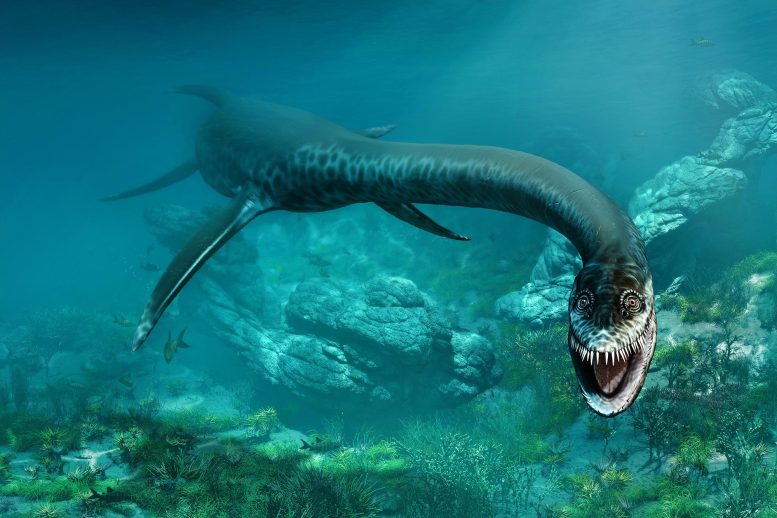
Scientists from The University of Texas at Austin discovered the first known Jurassic vertebrate fossils in Texas, specifically from a plesiosaur, in the Malone Mountains of West Texas. These fossils fill a major gap in Texas’s fossil record, previously dominated by marine invertebrates. An artist’s interpretation of a Jurassic plesiosaur.
A team led by scientists from The University of Texas at Austin has unveiled the first-ever Jurassic vertebrate fossils discovered in Texas, filling a significant gap in the state’s fossil history.
These ancient bone remnants, found to be from the extremities and spine of a plesiosaur, offer a glimpse into the prehistoric times when this extinct marine creature navigated the shallow waters that once spanned present-day northeastern Mexico and the far west of Texas around 150 million years ago.
The bones were discovered in the Malone Mountains of West Texas during two fossil hunting missions led by Steve May, a research associate at UT Austin’s Jackson School of Geosciences Museum of Earth History.
Before the discovery, the only fossils from the Jurassic that had been collected and described from outcrops in Texas were from marine invertebrates, such as ammonites and snails. May said that the new fossil finds serve as solid proof that Jurassic bones are here.
“Folks, there are Jurassic vertebrates out there,” May said. “We found some of them, but there’s more to be discovered that can tell us the story of what this part of Texas was like during the Jurassic.”
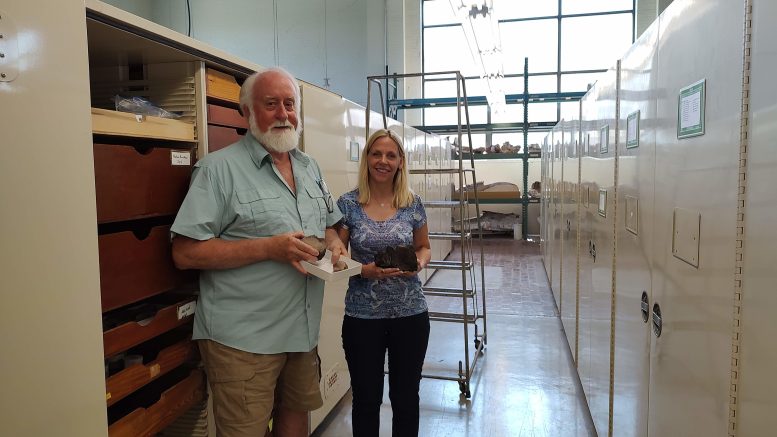
Steve May (left) and Lisa Boucher hold Jurassic fossils from the Malone Mountains of West Texas among the cabinets of the vertebrate paleontology collections at The University of Texas at Austin, where the fossils are now kept. May holds a portion of a plesiosaur vertebra. Boucher holds a piece of fossilized wood. Both May and Boucher are authors on a recent paper on the first Jurassic vertebrates found and described in Texas. Credit: Jackson School of Geosciences/ The University of Texas at Austin
A paper describing the bones and other fossils was published in Rocky Mountain Geology on June 23.
The Jurassic was an iconic prehistoric era when giant dinosaurs walked the Earth. The only reason we humans know about them, and other Jurassic life, is because of fossils they left behind.
But to find Jurassic-aged fossils, you need Jurassic-aged rocks. Because of the geological history of Texas, the state hardly has any outcrops from this time in Earth’s history. The 13 square miles of Jurassic-aged rocks in the Malone Mountains make up most of those rocks in the state.
In 2015, when May learned while researching a book that there were no Jurassic bones in the Texas fossil record, he decided to go to the Malone Mountains to explore.
“You just don’t want to believe that there are no Jurassic bones in Texas,” May said. “Plus, there was a tantalizing clue.”
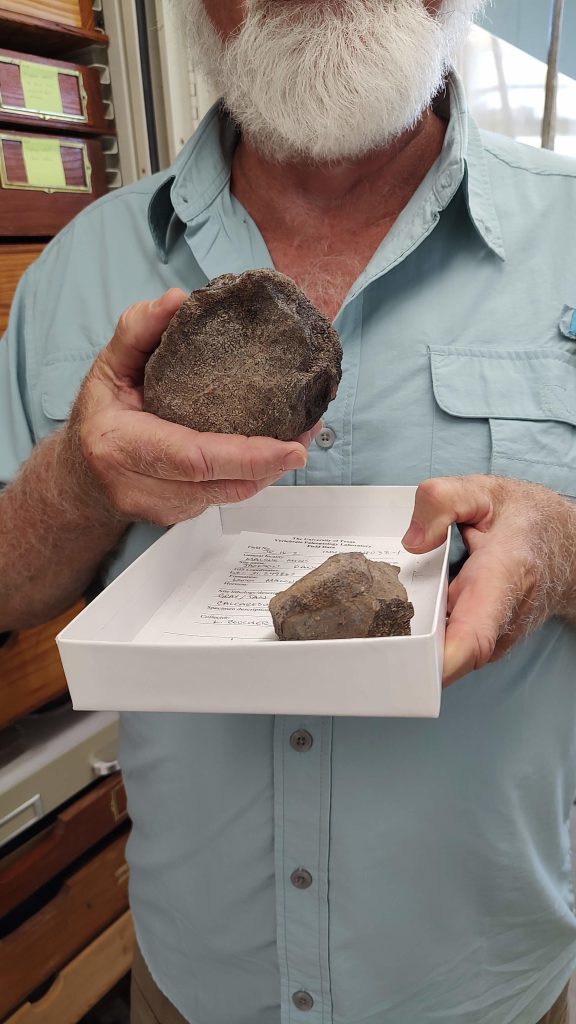
Steve May, a research associate at the Jackson School of Geosciences, holds a fossil from a plesiosaur, an extinct marine reptile. The fossil is among the first Jurassic vertebrate fossils discovered and described in Texas. Credit: Jackson School of Geosciences/ The University of Texas at Austin
The clue was a mention of large bone fragments in a 1938 paper on the geology of the Malone Mountains by Claude Albritton, who later became a geology professor at Southern Methodist University (SMU). It was enough of a lead to get May and his collaborators out to West Texas to see for themselves. Large bone fragments are what they found. The plesiosaur fossils are eroded and broken up.
But it’s a start that could lead to more science, said co-author Louis Jacobs, a professor emeritus at SMU.
“Geologists are going to go out there looking for more bones,” Jacobs said. “They’re going to find them, and they’re going to look for the other things that interest them in their own special ways.”
Today, the Malone Mountains rise above the dry desert landscape. During the Jurassic, the sediments were deposited just below sea level probably within miles of the shoreline.
The team found several other specimens that give a look into the ancient shallow marine environment, such as petrified driftwood filled with burrows from marine worms and the shells of clams, snails, and ammonites. The researchers found a range of plant fossils, including a pinecone, and wood with possible growth rings.
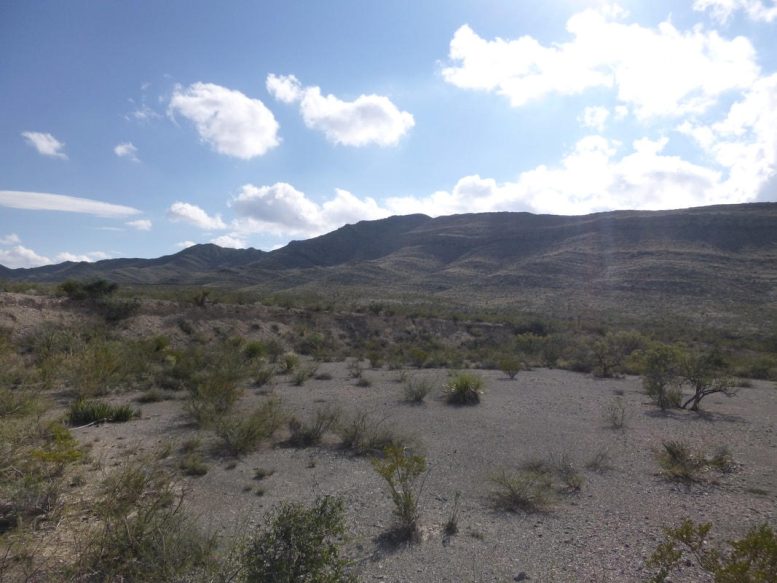
The Malone Mountains of West Texas. Texas has very few outcrops of Jurassic rocks. Most of them are in the Malones. Credit:
Joshua Lively
Globally, Jurassic plant fossils from lower latitudes close to the Earth’s equator are relatively rare, said co-author and paleobotanist Lisa Boucher, the director of the Jackson School’s Non-Vertebrate Paleontology Lab. She said the plant finds should make the Malones a place of interest to other paleobotanists and those interested in paleoenvironmental reconstruction.
Scientists have been conducting research in the Malones for over 100 years. So, why did it take so long to bring back Jurassic bones? May has several ideas – from remoteness of the area and permitting, to the research interests of past scientists. Whatever the reasons, Boucher said that the team’s discovery of a Texas first shows the value of fieldwork – simply traveling to a place to see what’s there.
“It’s frequently part of the scientific process,” Boucher said. “There’re a few lines buried in an old publication, and you think ‘surely somebody has already looked at that,’ but often they haven’t. You need to delve into it.”
Reference: “A record of Late Jurassic vertebrates from Texas” by Steven R. May, Kenneth S. Bader, Lisa D. Boucher, Louis L. Jacobs, Joshua R. Lively, Timothy S. Myers and Michael J. Polcyn, 1 June 2023, Rocky Mountain Geology.
DOI: 10.24872/rmgjournal.58.1.19
The study’s additional co-authors are Kenneth Bader, a laboratory manager at the Jackson School Museum of Earth History; Joshua Lively, the curator of paleontology at Utah State University and a Jackson School alumnus; and Timothy Myers and Michael Polcyn, both researchers at Southern Methodist University.

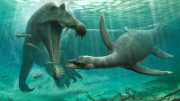
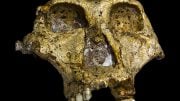


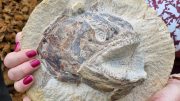
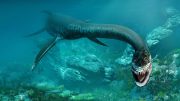
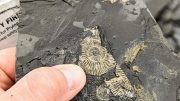

Be the first to comment on "First-Ever Jurassic Vertebrate Fossils Discovered in Texas"